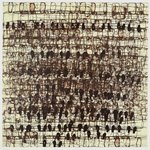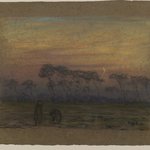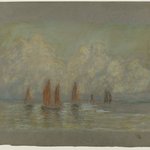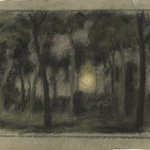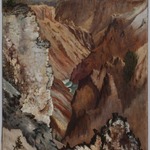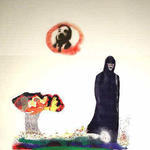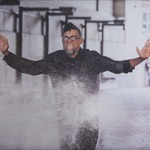
This image is presented as a "thumbnail" because it is protected by copyright. The Brooklyn Museum respects the rights of artists who retain the copyright to their work.
Harlem Street Scene
Jacob Lawrence
Contemporary Art
These three screenprints represent a later period in Jacob Lawrence’s career, when he turned his attention to printmaking. Extending a theme from his earlier work—the sixty panels of his landmark Migration Series (1941)—here he continues to treat the history of African Americans who had migrated to the North in great numbers between the 1920s and the 1940s.The artist said:
To me, migration means movement. There was conflict and struggle. But out of the struggle came a kind of power and even beauty. “And the migrants kept coming” is a refrain of triumph over adversity.
The ’20’s . . . The Migrants Cast Their Ballots shows black people exercising the right to vote. The Builders and Harlem Street Scene show Lawrence’s interest in the vibrancy of everyday life—not only in the particular activities shown, but in the humanity and dignity of the people.
To me, migration means movement. There was conflict and struggle. But out of the struggle came a kind of power and even beauty. “And the migrants kept coming” is a refrain of triumph over adversity.
The ’20’s . . . The Migrants Cast Their Ballots shows black people exercising the right to vote. The Builders and Harlem Street Scene show Lawrence’s interest in the vibrancy of everyday life—not only in the particular activities shown, but in the humanity and dignity of the people.
MEDIUM
Screenprint on white wove paper
DATES
1975
DIMENSIONS
Sheet: 30 7/16 x 22 1/2 in. (77.3 x 57.2 cm)
Image: 24 3/8 x 18 1/2 in. (61.9 x 47 cm) (show scale)



SIGNATURE
Signed, "Jacob Lawrence 1975" lower right in graphite
INSCRIPTIONS
Below screenprint: "123/150" "Harlem Street Scene" "Jacob Lawrence" "1975" in graphite
COLLECTIONS
Contemporary Art
ACCESSION NUMBER
1989.32
CREDIT LINE
Gift of Robert Levinson
MUSEUM LOCATION
This item is not on view
CAPTION
Jacob Lawrence (American, 1917–2000). Harlem Street Scene, 1975. Screenprint on white wove paper, Sheet: 30 7/16 x 22 1/2 in. (77.3 x 57.2 cm). Brooklyn Museum, Gift of Robert Levinson, 1989.32. © artist or artist's estate (Photo: Brooklyn Museum, 1989.32_PS9.jpg)
EDITION
Edition: 123/150
IMAGE
overall, 1989.32_PS9.jpg. Brooklyn Museum photograph, 2017
"CUR" at the beginning of an image file name means that the image was created by a curatorial staff member. These study images may be digital point-and-shoot photographs, when we don\'t yet have high-quality studio photography, or they may be scans of older negatives, slides, or photographic prints, providing historical documentation of the object.
RIGHTS STATEMENT
© artist or artist's estate
Copyright for this work may be controlled by the artist, the artist's estate, or other rights holders. A more detailed analysis of its rights history may, however, place it in the public domain.
The Museum does not warrant that the use of this work will not infringe on the rights of third parties. It is your responsibility to determine and satisfy copyright or other use restrictions before copying, transmitting, or making other use of protected items beyond that allowed by "fair use," as such term is understood under the United States Copyright Act.
For further information about copyright, we recommend resources at the United States Library of Congress, Cornell University, Copyright and Cultural Institutions: Guidelines for U.S. Libraries, Archives, and Museums, and Copyright Watch.
For more information about the Museum's rights project, including how rights types are assigned, please see our blog posts on copyright.
If you have any information regarding this work and rights to it, please contact copyright@brooklynmuseum.org.
RECORD COMPLETENESS
Not every record you will find here is complete. More information is available for some works than for others, and some entries have been updated more recently. Records are frequently reviewed and revised, and we welcome any additional information you might have.
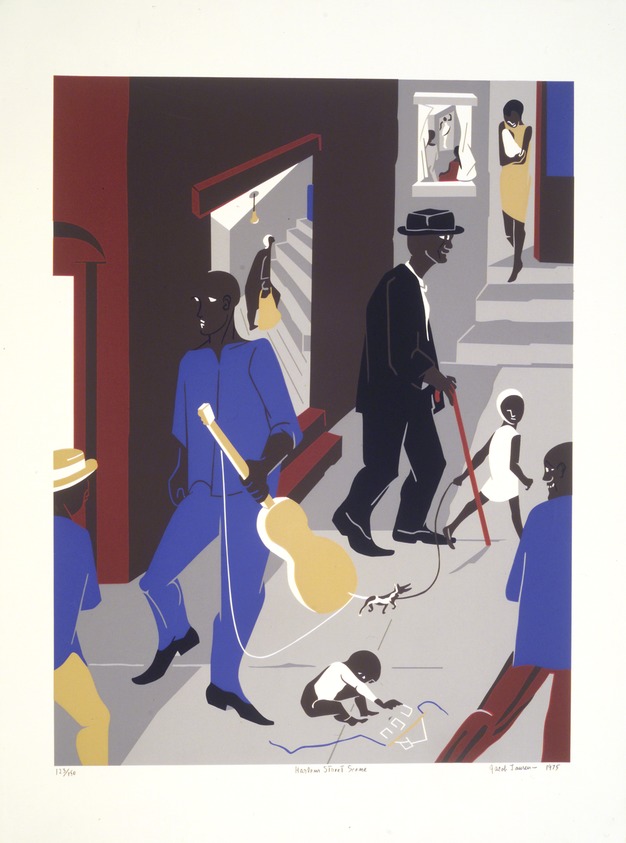
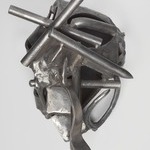
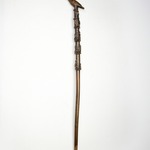

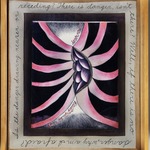
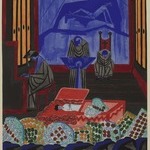
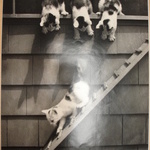


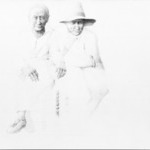
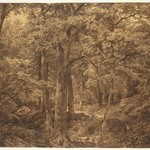
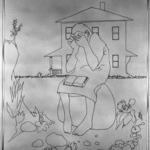
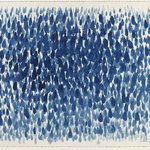
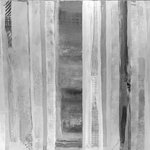

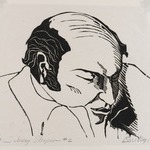

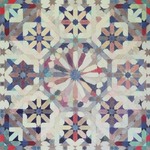
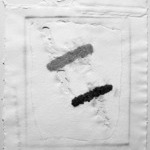
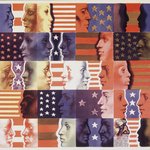
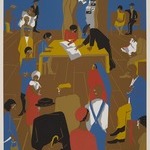
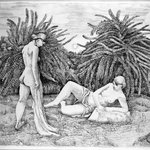
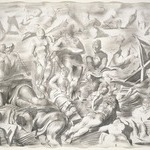


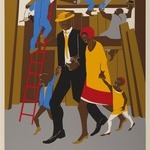


![[Untitled] (Crowd/The Fire Next Time)](https://d1lfxha3ugu3d4.cloudfront.net/images/opencollection/objects/size2_sq/2000.56_transp5856.jpg)
![[Untitled] (Cancellation Prints)](https://d1lfxha3ugu3d4.cloudfront.net/images/opencollection/objects/size2_sq/2003.60b_PS9.jpg)
